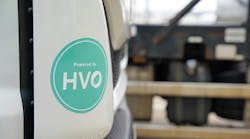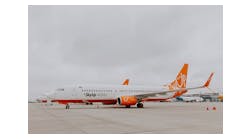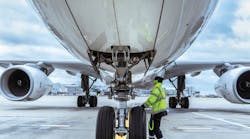As the government inches toward easing entry restrictions into the country amid the coronavirus pandemic, the first step has been the restart of business travel, mainly between Asia. However, there is a risk that an increase in the number of international arrivals will worsen the spread of infections in Japan. Whether airport screening can stop people infected with the virus from entering the country will be key. Passengers disembarking from Japan Airlines Flight 746 from Manila at Narita Airport on Saturday went directly to the Terminal 2 quarantine inspection area, where they handed saliva samples in test tubes to the staff so that antigen tests could be conducted. Saliva-based antigen testing was introduced at Narita and Haneda airports on July 29 to replace polymerase chain reaction (PCR) testing, which involves collecting samples from the back of the nose and throat. After a quarantine officer confirms the contact information and address of passengers, those who have received certificates indicating their test results were negative can leave the airport in as little as an hour. Saliva-based antigen testing was also introduced at Kansai Airport on Saturday. The new airport quarantine procedure was prompted by the government’s policy of increasing travel, especially among business travelers. It takes about six hours to find out the results of conventional PCR tests. When more than 1,000 people were tested at Narita Airport on June 28, it led to the unusual situation of a return flight departing during the restricted period for take-offs and landings. Saliva-based antigen screenings will greatly increase testing capacity, as it takes only about 30 minutes to obtain results. Although antigen testing is considered to be less accurate than conventional PCR testing, it takes a shorter time to obtain results, which means less congestion at airports and less risk of transmission among passengers. “We need to respond to the increase in the number of people entering Japan, so this is the best option considering the speed of the process. We are urging people to isolate at home for 14 days as a precaution,” a senior official at the Health, Labour and Welfare Ministry said. However, there are still issues to be addressed for future border control measures.
¦ 10,000 tests a day The government plans to increase the screening capacity at airports nationwide, aiming to conduct 10,000 tests a day by the end of September. However, in order to process 10,000 people a day, as well as increasing inspection capacity, there is also a need to plan how the flow of passengers will be processed and secure waiting areas at airports. The number of people who used Haneda, Narita, and Kansai airports to enter Japan last year averaged about 100,000 a day. “The introduction of antigen screening will help for the time being, but once the situation returns to normal, we won’t be able to handle it,” a quarantine official said. In order to cope with the situation, it will be essential to expand the space available for testing, increase the number of quarantine officers, and cooperate with private inspection companies. How to restrict people’s activities after they enter the country is another important issue. Shortly after the government announced its plan to reopen Narita Airport in mid-June, Chiba Prefecture Gov. Kensaku Morita visited Health, Labor and Welfare Minister Katsunobu Kato and called for “thorough measures to be taken at the border to dispel the concerns of people in the prefecture.” The government currently requires all Japanese nationals and foreign visitors entering Japan to isolate themselves at home or at their accommodation for 14 days. However, it is only a request: Compliance is effectively the responsibility of the individual as it is difficult to check the status of each passenger. The government is considering exempting from the 14-day isolation period business travelers, who are the main target of the eased restrictions. Conditions are likely to include making travelers install a contact-tracing app and report in advance the location of their activities. However, there are a number of issues that need to be addressed, including the effectiveness of such measures.
Photo: A quarantine officer, right, receives a saliva sample from a passenger at Narita Airport Terminal 2 on Saturday.
———
©2020 the Asia News Network (Hamburg, Germany)
Visit the Asia News Network (Hamburg, Germany) at www.asianewsnet.net/home/
Distributed by Tribune Content Agency, LLC.




